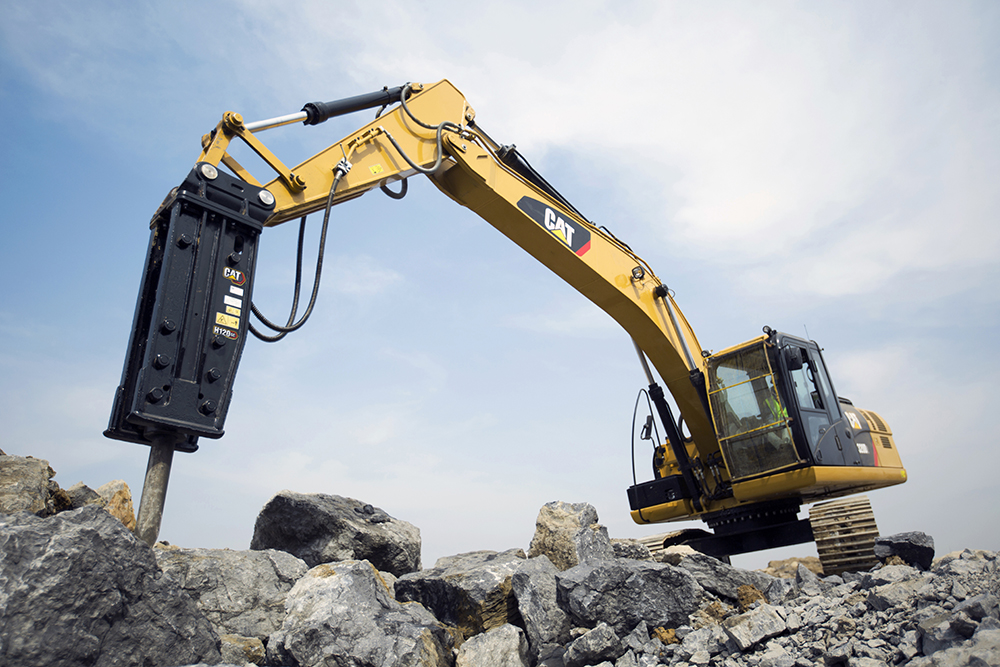
To remain competitive in today’s challenging economic environment, quarry owners are looking beyond the basics. They are looking at how their equipment can squeeze more margins and volumes, and a strong attachment focus is gaining momentum.
Quarry owners understand that a key factor in succeeding with any fleet of equipment, especially excavators, is getting the most out of the machines. Attachments are key to equipment versatility and utilisation. Using various tools and attachments can turn excavators from one-dimensional pieces of equipment into multipurpose and adaptable machines.
For many years, attachments have been designed to enhance equipment fleets. While that likely won’t change, advancing technology in hydraulic hammers – probably the most popular type of machine attachment – means today’s equipment operators can benefit from innovations that are taking accuracy and breaking efficiency to a whole new level.
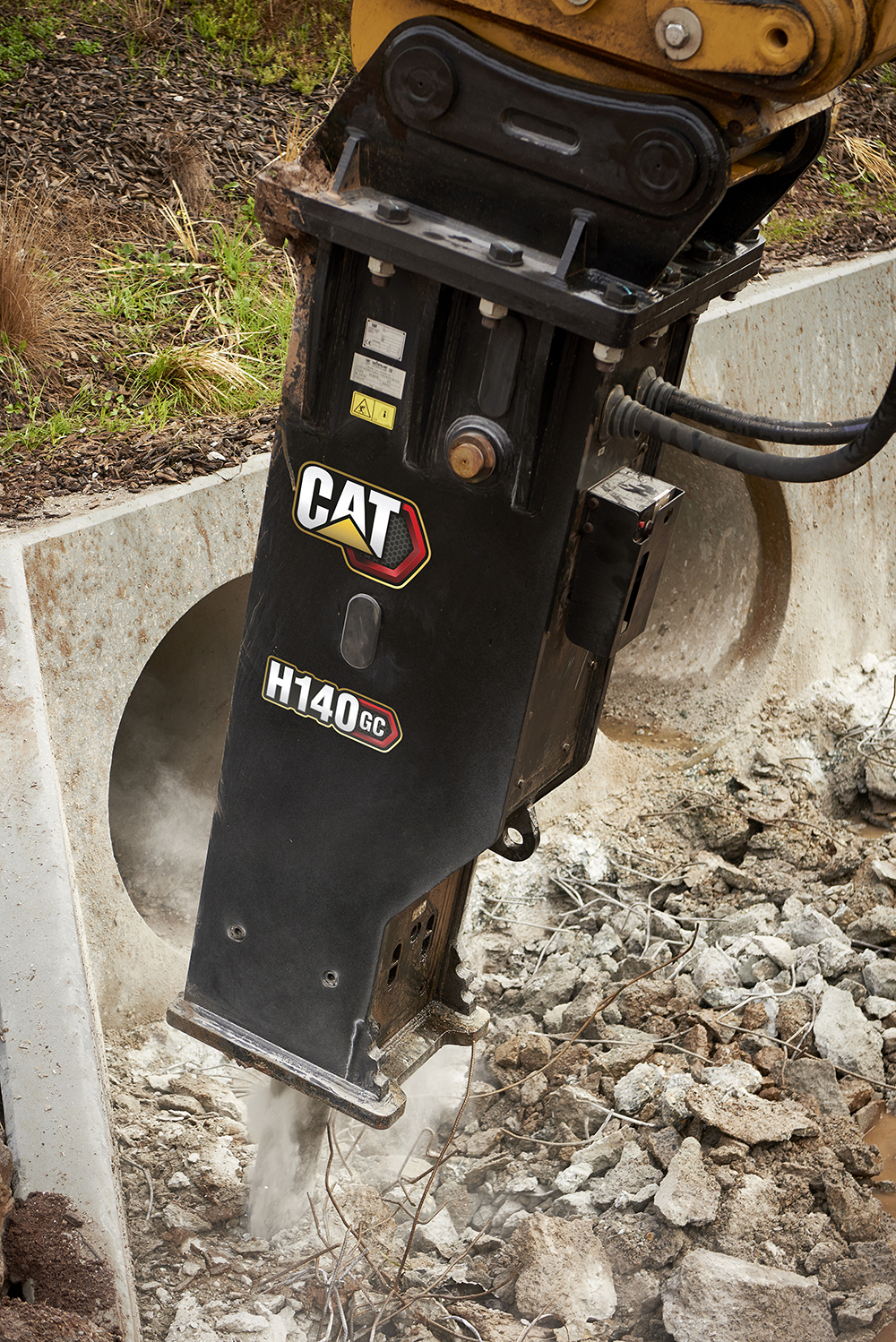
One of the most recent technological advancements in hydraulic hammers is the blank-firing protection feature. Blank firing occurs when the operator activates the hammer without the tool engaged with the material to be broken. In such an event, the energy of the piston striking the tool has nowhere to go but back into the hammer and the carrier machine. The effect of blank firing is increased wear on both hammer and machine.
Thus, blank-firing protection is designed to minimise wear and tear that the hammer faces. By employing blank-firing protection, the hammer can be protected from direct metal-to-metal contact, thus guarding against premature deterioration. Reducing the stress transmitted back to the carrier machine also has the additional benefit of providing a substantially more comfortable environment for the operator.
“Blank-firing protection is key to ensuring the piston will not cycle after the tool penetrates the material,” explains Gilles Ronnet, demolition product application specialist, EAME (Europe, Africa, Middle East) region at Caterpillar. This, he says, reduces internal stresses and protects the assets, both the hammer and the carrier. “This feature lowers owning and operating costs and is operator friendly.”
Ronnet says Caterpillar is developing different combined technologies for both machines and hammers. Caterpillar has integrated a hammer auto-stop function in the Next Generation machines, which alerts the operator of blank firing after 15 seconds, and automatically stops the hammer after 30 seconds if the operator doesn’t stop hammering, as per good practice. The new safety feature protects both the hammer and the machine and reduces drastically customers’ maintenance costs.

“The auto shut-off feature instantly stops the piston when breaking through material. It prevents blank firing, which is a top cause of hammer wear. Internal stresses are reduced, providing more productive hours of work. The hammer is protected, regardless of operator skill level,” he says.
Another technological advancement of note is the energy-recovery valve, which is designed to increase the striking power of the hammer by transferring recoil energy to the tool’s next blow. “Energy recovery is using the bounce energy of the piston to help it cycle down in combination with the pressure of the accumulator,” says Ronnet.
Speed control is yet another technological advancement that has come to the fore in recent years. This feature offers increased productivity and minimises backflow of harmful energy to the excavator. According to Ronnet, speed control adapts the speed and consequently the power of the hammer to the material being broken, resulting in optimum productivity.
“This feature – with two manual turns on the side of the power cell – doubles the piston speed without reducing the power. The slower speed allows the hammer to hit at full power. This allows for maximum production and matches the hammer speed and power to the application,” says Ronnet.
Caterpillar offers several hammer line-ups with product deliverables satisfying different customer requirements with different technologies. The E performance hammer line-up based on oil-fired technology matches carriers in the 11 to 52-tonne weight category. The silenced hammer line is recommended for high-time utilisation and high productivity.
Caterpillar’s E Series is a good example of forward momentum in hydraulic hammer development. The range comes with a number of features that set the bar high in the hydraulic hammer field. For example, the tri-suspension system comprises the suspension jacket, the lower and upper buffers. Suspension aligns the power cell and gives manageable, smooth performance.
The lower and upper buffers, at both ends of the power cell, absorb reflective forces, isolating them from the machine. The result is quiet, reliable operation and reduced operator fatigue. The suspension jacket, which dampens vibration and sound, allows the hammer to be used in urban and other noise-sensitive areas.
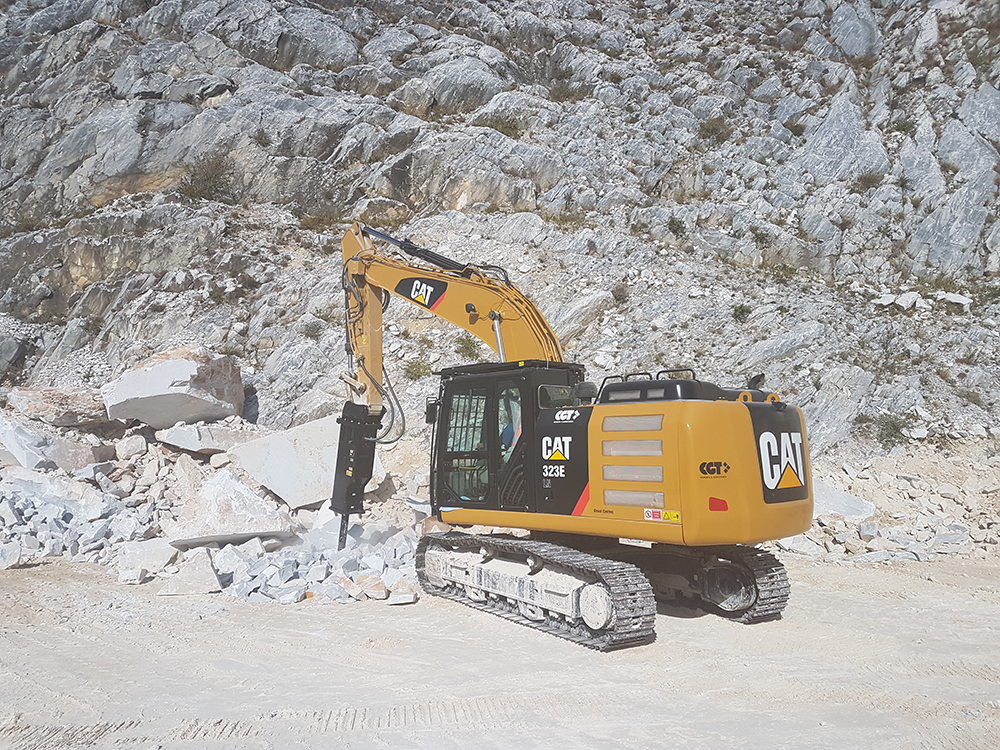
With the seal carrier, gas is retained in the power chamber by a series of five seals. These are engineered using technology developed for Cat engines, and provide maximum gas retention between scheduled service intervals. When service is needed, the seal carrier is easily removed.
A pressure control valve (PCV) maintains maximum hydraulic pressure to ensure the hammer delivers all blows at full power. PCVs can be easily checked and adjusted from outside the hammer in about 30 minutes. A check valve isolates harmful pulsation spikes from the carrier hydraulic circuit.
The plug & perform feature is designed for convenient installation on Cat machines. There is no adjustment necessary for hydraulic pressures or flows. The hammer handles full auxiliary flow and pressure, automatically adjusting to match the Cat tool carrier. Hammer over-speeding and shortened service are prevented.
The GC value hammer line based on gas-fired technology is ideal for 12 to 40-tonne carrier weights. The non-silenced hammer is built to handle high-productivity applications and is designed to fit customers’ budget requirements.
Tharen Peterson, product application specialist, attachments for machines under 10 tonnes at Caterpillar, says the silenced H hammer line-up based on gas fire technology matches carriers from one to 10 tonnes, as well as skid-steer loaders, compact track loaders and backhoe loaders.
The B series is also a gas-fired hammer that matches carriers from less than one to 10 tonnes, as well as skid-steer loaders, compact track loaders and backhoe loaders. The hammer range comes either silenced or non-silenced, and is offered with fewer features and just as much capability with budget requirements in mind.
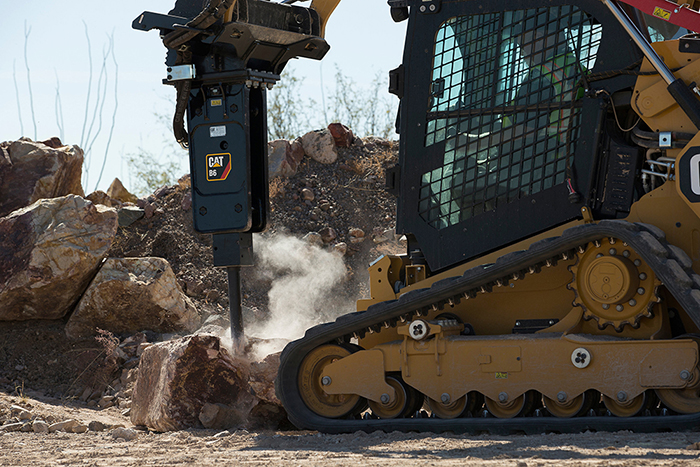
In addition, Caterpillar is launching the PL161 asset tracker and locator. Every Cat hydraulic work tool (for machines above 10 tonnes) – as at first phase of deployment starting in May this year – will be shipped from the factory with this device that allows operators to keep track of tools and record working hours accurately to schedule the necessary preventative maintenance.
The PL161 locator is said to be the most advanced OEM-integrated technology solution for attachment tracking. With the ability to track location and utilisation, users can know where their attachments are across all worksites, reduce the number of lost attachments and plan for attachment maintenance and replacement.
“The PL161 attachment locator can be used on attachments and non-powered assets as an affordable option for last known location tracking, and it integrates easily into users’ operation for full fleet management of machines and attachments from one dashboard on a smartphone or a tablet,” Ronnet explains.
“A work tool recognition system has been added to the Next Generation machines, allowing an automatic hydraulic setting adjustment. All these features are now available on Next Generation Cat machines and work tools and are part of the Cat fleet management system,” explains Ronnet.
As with some of the features on the Cat B and H hammers, Peterson says Caterpillar is constantly looking at the portfolio and determining what functionality is offered throughout the line. What makes sense on the larger hammer and machine offering, he says, may not yet be a customer requirement on the 10-tonne and under class.
“As such, the auto-stop function is not part of the less than 10-tonne offering at this point. Similarly, on the compact construction equipment side, the PL161 will not be installed on the 10-tonne and under attachments as this has not become a requirement in this size of attachments, yet. Across the line, we intend to bring value to our customers. Again, what works on the larger machines and attachments may not yet be a requirement for the compact construction segment. We have that flexibility to offer what different customer groups require,” explains Peterson.
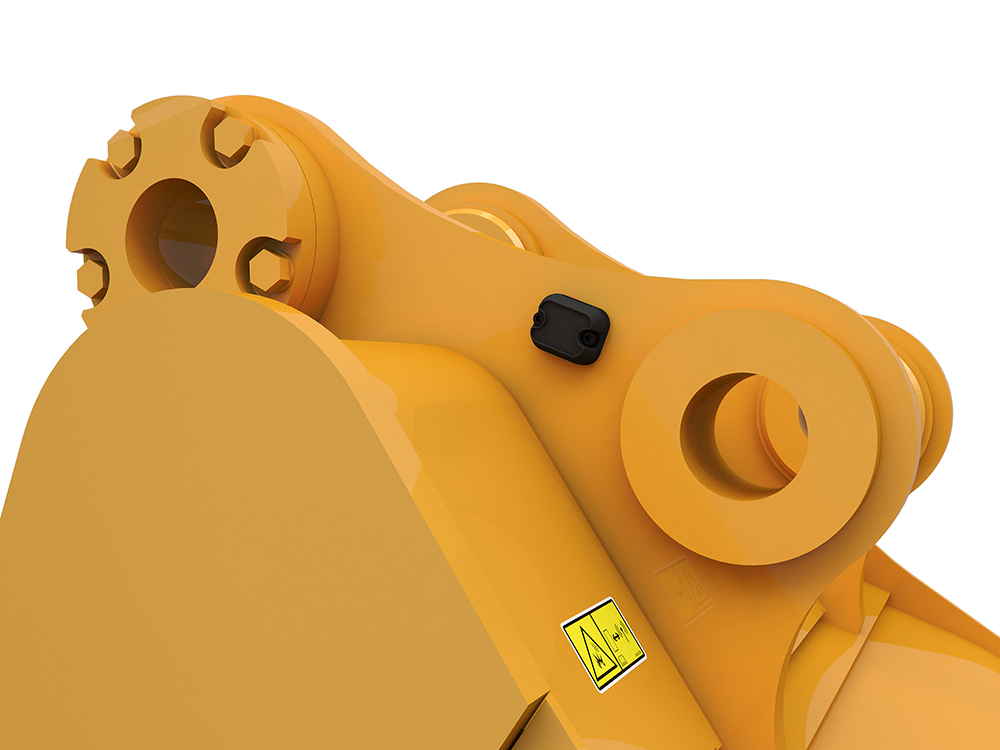
Like any other piece of equipment, regular maintenance of hydraulic hammers is of utmost importance to minimise wear and tear, increase efficiency, productivity and lifespan.
Thus, hammers should be inspected on a regular basis to identify any wear and tear signs. All the indicators showing wear and tear on the console of the hammer, for example, must be checked periodically. This can lead to identification of the damage at an early stage before they become big and costly issues.
“Maintenance is key for an optimum hammer life and for reducing maintenance costs,” says Ronnet, adding that the right machine, hammer choice and commissioning are also key parameters of importance. “All the hydraulic parameters – right flow at right pressure, back pressure check and relief valve setting – have to be set properly,” he says.
Training is also key for optimum productivity and reduced maintenance costs. “This is part of Caterpillar’s standard delivery process, we deliver both iron and expertise,” concludes Ronnet.








